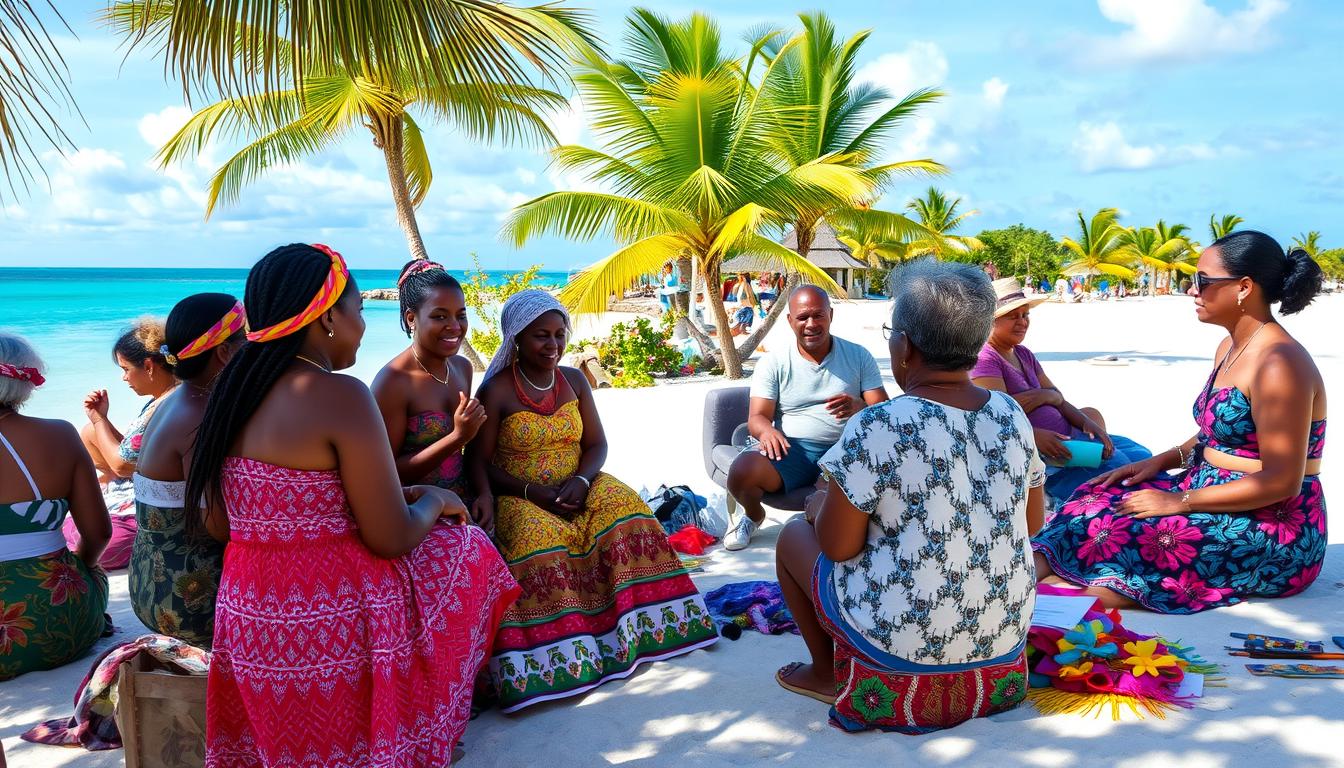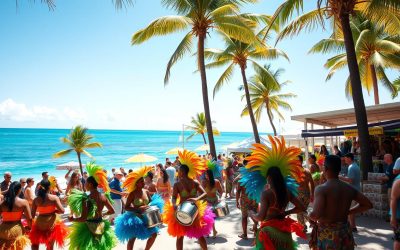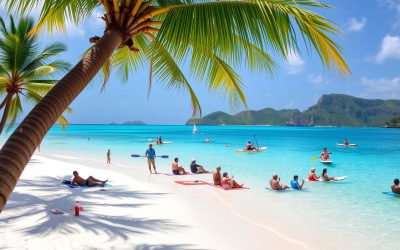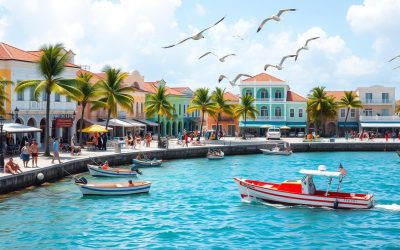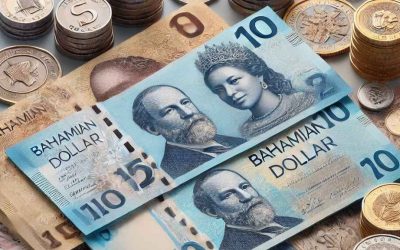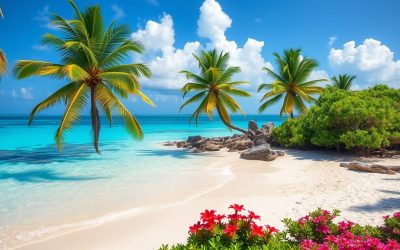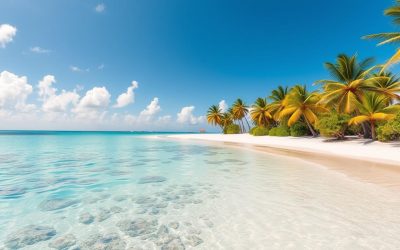Have you ever wondered how a small island nation can have so many languages? The Bahamas is a great example. Here, English and Creole mix to create a special way of talking.
In the Bahamas, language is more than just talking. It shows the nation’s history. Official English is used in government and business. But Bahamian Creole is heard in local communities, telling stories of the past and the people’s strength.
The story of the Bahamas’ languages shows how languages change and keep a culture alive. With over 400,000 Creole speakers and English as the official language, the Bahamas is a place of amazing language variety. It attracts linguists and travelers who love to learn about different ways of speaking.
Key Takeaways
- English is the official language of the Bahamas
- Bahamian Creole is spoken by over 400,000 people
- Language reflects the nation’s rich cultural heritage
- Linguistic diversity is a result of historical migrations
- Communication in the Bahamas blends multiple linguistic influences
Understanding the Linguistic Landscape of the Bahamas
The Bahamas is a fascinating mix of languages from different cultures. This mix comes from centuries of cultural interactions. It shows how languages have changed, moved, and blended together.
Historical Language Development
In the early 18th century, British settlers brought English to the Bahamas. This was a key moment that changed the islands’ culture.
- Indigenous Lucayan languages gradually disappeared
- English became the dominant communication method
- Cultural interactions introduced diverse linguistic influences
Current Language Distribution
Today, the Bahamas is a place of rich languages. English is the official language, used in all formal talks.
| Language | Usage Percentage | Context |
|---|---|---|
| English | 95% | Formal communications |
| Bahamian Creole | 80% | Informal daily interactions |
| Haitian Creole | 10-20% | Immigrant communities |
Impact of Cultural Diversity
The Bahamas’ languages show its rich cultural mix. About 85% of people have African ancestry. This has made the language unique, with its own rhythms and words.
“Language is the roadmap of a culture. It tells you where its people come from and where they are going.” – Rita Mae Brown
Exploring Bahamian languages shows a system that keeps changing. It grows with each new generation.
English as the Official Language
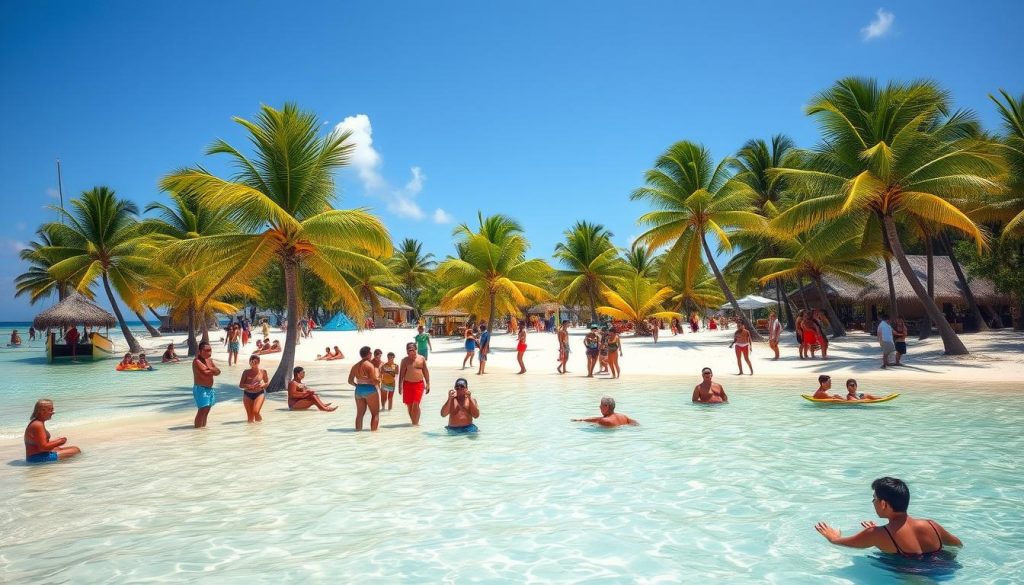
The Bahamas proudly holds English as its official language. This heritage comes from its colonial past. When you visit the islands, you’ll see English used everywhere: in government, schools, businesses, and social events.
Exploring the Bahamas’ language scene offers interesting facts:
- English is the sole official language of the Bahamas
- British English shapes how people talk
- All government documents and records are in English
- Schools teach only in English
“Language is the roadmap of a culture. It tells you where its people come from and where they are going.” – Rita Mae Brown
Though English is the main language, the Bahamas values language diversity. Unlike many Caribbean places, the Bahamas sticks to English. This unity in language helps a lot in talking to the world, especially in tourism, business, and diplomacy.
Also, even though Mandarin is becoming more popular worldwide, English is still the main language for learning and work in the Bahamas. This shows the country’s strong role in global economics and culture.
Bahamian English: A Unique Island Dialect
Explore the colorful world of Bahamian English. It’s a mix of history and local flair, making it special. This dialect shows the Bahamas’ vibrant culture.
Pronunciation Characteristics
Bahamian English has its own sound. It often drops or adds the ‘h’ sound. This makes words like “harm” and “arm” sound alike.
- Tendency to replace dental fricatives with /d/ and /t/
- Vowel mergers that create unique sound combinations
- Non-rhotic accent with emerging variations among younger speakers
Vocabulary Distinctions
The dialect is full of Bahamianisms. These are local sayings that show the islands’ spirit. Over 5,500 words and phrases are unique to Bahamian English, as found by Holm & Shilling.
| Standard English | Bahamian Expression |
|---|---|
| This | Dis |
| Think | Tink |
| Your | Ya |
Grammar Patterns
Bahamian English has its own grammar. It makes verb forms and possessives simpler. This creates a unique way of speaking.
“Language is the road map of a culture. It tells you where its people come from and where they are going.” – Rita Mae Brown
Some key features include:
- Simplified verb “to be” conjugations (e.g., “I is”, “We is”)
- Unique negative forms like “een” (is not)
- Varied uses of the verb “to go”
With about 250,000 native speakers, Bahamian English keeps changing. It shows the Bahamas’ lively culture. This dialect is more than words; it’s a piece of the islands’ history.
Bahamian Creole: The Local Vernacular
In the Bahamas, Bahamian Creole is a key part of the culture. It comes from a mix of British English and African languages. This makes it a special way to talk that is heard all over the islands.
Bahamian Creole, also known as Bahamianese, shows the Bahamas’ rich history. It’s spoken by over 400,000 people, making it a big part of the country’s identity. It was shaped by the interactions between enslaved Africans and British colonizers.
“Language is the road map of a culture. It tells you where its people come from and where they are going.” – Rita Mae Brown
Some key features of Bahamian Creole are:
- Non-rhotic pronunciation patterns
- Unique vowel variations
- Simplified consonant clusters
- Distinct phonetic features
Learning about Bahamian Creole helps us understand the Bahamas better. Even though English is the official language, Creole is how people really talk. It connects communities and keeps cultural traditions alive.
| Language Aspect | Characteristic |
|---|---|
| Native Speakers | Over 400,000 |
| Language Origin | British English and African Influences |
| Pronunciation | Non-rhotic with unique vowel patterns |
Exploring the Bahamas or diving into its culture? Learning Bahamian Creole helps you connect with this lively Caribbean nation.
Haitian Creole in the Bahamas
The Bahamas have a rich mix of languages, with Haitian Creole being a big part. It comes from Haitian immigrants who have lived there for many years. Now, Haitian Creole is a key part of Bahamian life.
Historical Migration Patterns
Haitians have been coming to the Bahamas for a long time. They brought Haitian Creole with them. This has made the islands’ culture richer and more diverse.
Community Usage and Spread
About 25% of Bahamians speak Haitian Creole. It’s a big deal in how people talk to each other. Families with Haitian roots keep their language alive.
| Language Group | Percentage of Speakers |
|---|---|
| English | 75% |
| Haitian Creole | 25% |
Cultural Significance
Haitian Creole is more than a language. It’s about culture, history, and community. Schools like the College of The Bahamas teach it, with over 250 students each year.
“Language is the road map of a culture. It tells you where its people come from and where they are going.” – Rita Mae Brown
- Haitian Creole shows the history of Haitian people in the Bahamas
- It connects families across generations
- It’s taught in schools to keep it alive
Even though Italian is not common in the Bahamas, the mix of languages shows the islands’ diversity. Haitian Creole is a lively part of Bahamian culture.
Language Evolution and Cultural Identity
The Bahamas’ language shows a rich mix of history and culture. Exploring the islands, you see how language has shaped Bahamian identity and strength.
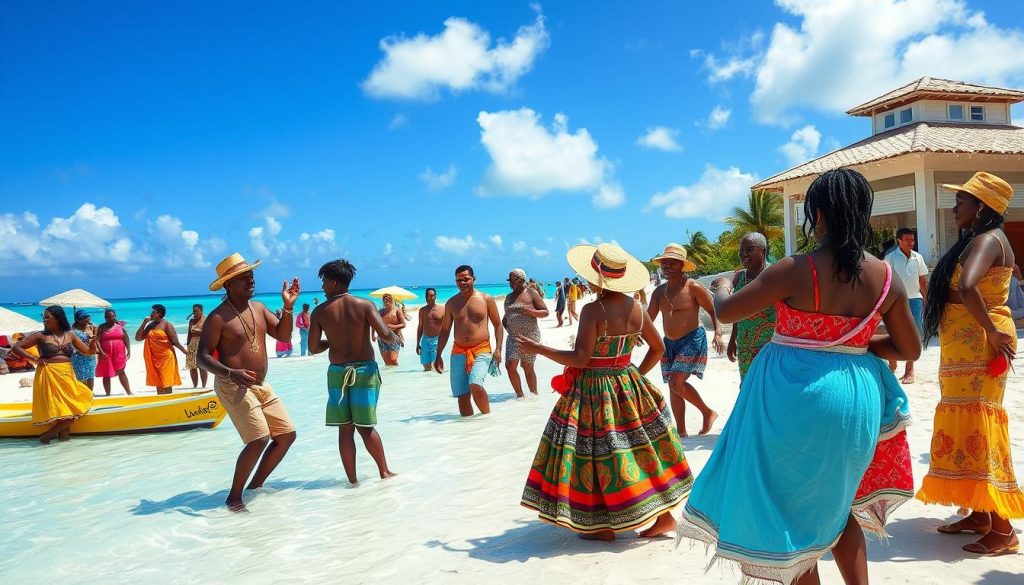
The roots of Bahamian language are complex. Enslaved West Africans brought their ways of speaking to the islands. This led to the development of Bahamian English and Creole. These languages became more than just ways to talk; they were signs of cultural survival.
- African linguistic traditions blended with European colonial influences
- Creole emerged as a dynamic method of resistance and identity preservation
- Language continuously evolved through social interactions
“Language is the roadmap of a culture. It tells you where its people come from and where they are going.” – Rita Mae Brown
To understand the Bahamas’ language journey, we must see how different groups shaped it. The mix of English and Creole shows more than just language variety. It shows the strength of Bahamian culture.
| Language Influence | Cultural Contribution |
|---|---|
| West African Linguistic Roots | Foundational communication structures |
| European Colonial English | Official language framework |
| Bahamian Creole | Cultural expression and identity marker |
Exploring the Bahamas, you’ll find language is always changing. Every conversation and dialect variation shares a story of survival, adaptation, and pride.
Language Use in Official and Professional Settings
The Bahamas has a strong language scene, with English as the main official and professional language. Understanding how language works here shows a mix of complexity and structure in communication across different fields.
In the Bahamas, language is key in various professional areas. Let’s see how English is used in important fields:
Government Communication Strategies
The Bahamas’ government uses British English for all official stuff. This makes sure everything is clear and follows a set way of talking.
- Official documents are in standard British English.
- Public announcements stick to formal language rules.
- Legal talks are in precise, formal English.
Educational System Language Practices
Schools in the Bahamas focus on English as the main teaching language. They use standard British English but also respect local language differences.
| Educational Level | Language of Instruction |
|---|---|
| Primary Schools | British English |
| Secondary Schools | Standard British English |
| Higher Education | Academic English |
Business Environment Language Dynamics
In business, English is the main way people talk. Tourism is big, so workers often talk to people from all over. This means they need to be good at communicating in different ways.
“Language is the passport to professional success in the Bahamas” – Local Business Leader
Even though Spanish isn’t an official language, businesses are starting to see its value. This is because it helps them reach out to more people from different countries. The language scene is changing, showing how the Bahamas is always growing and changing culturally.
Impact of Tourism on Language Use
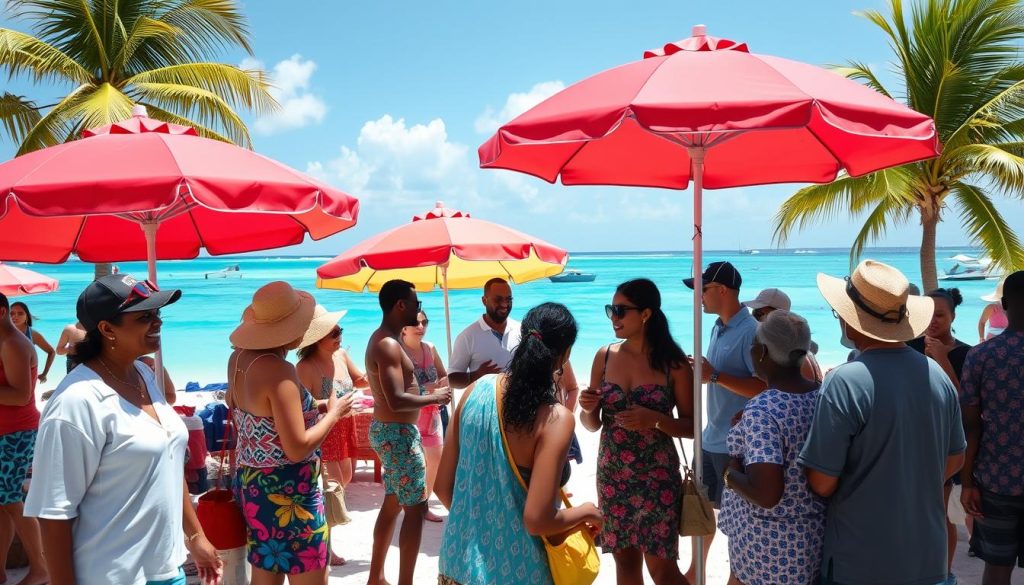
The Bahamas relies heavily on tourism, which shapes how people speak across the islands. Visitors from all over add to the mix, making communication richer. English is the main language used, helping locals and tourists to understand each other.
Tourism has led to new ways of speaking in the Bahamas. Hotel staff and tour guides learn many languages to serve guests. This need for flexibility in speaking helps Bahamians to communicate more widely.
“Language is the roadmap of a culture. It tells you where its people come from and where they are going.” – Rita Mae Brown
- Tourism drives language innovation in the Bahamas
- English remains the primary communication tool
- Hospitality sector promotes linguistic adaptability
- Cultural exchange enriches local language practices
Tourism is a big deal for the Bahamas’ economy. It makes up over a third of the country’s income. Also, about two-fifths of the workforce works in tourism, making language skills very important for jobs.
| Language Aspect | Tourism Impact |
|---|---|
| Communication Flexibility | High |
| English Proficiency | Essential |
| Cultural Exchange | Significant |
Even though English is the main language, French and others are becoming more common. Tourism makes the language scene in the Bahamas lively and diverse, showing off the islands’ rich culture.
Language Education and Learning Resources
The Bahamas is a great place for learning English and other languages. It has many resources for students, both locals and international ones. This makes it a fantastic spot for language education.
Language Schools and Programs
In the Bahamas, you can choose from many ways to learn English. Schools offer different programs, such as:
- One-on-one tutoring programs
- Intensive language immersion experiences
- University-level language courses
- Private language institutes
Teaching Materials and Methodology
Language schools in the Bahamas use new teaching materials. These materials help you learn English well. They also include local language features for a full learning experience.
| Course Type | Duration | Approximate Cost |
|---|---|---|
| Intensive English Course | 4-12 weeks | $300-$1,500 |
| University Language Program | Semester | $2,000-$5,000 |
Online Learning Resources
Online learning has changed how we learn languages. You can find many online tools for different skill levels, like:
- Interactive language learning websites
- Virtual tutoring platforms
- Mobile language learning applications
“Language is the road map of a culture. It tells you where its people come from and where they are going.” – Rita Mae Brown
Whether you want to learn Mandarin, English, or other languages, the Bahamas is a great place. Scholarships like the Tortuga Study Abroad Scholarship and Benjamin A Gilman Scholarships can help pay for your education.
Modern Language Trends and Future Outlook
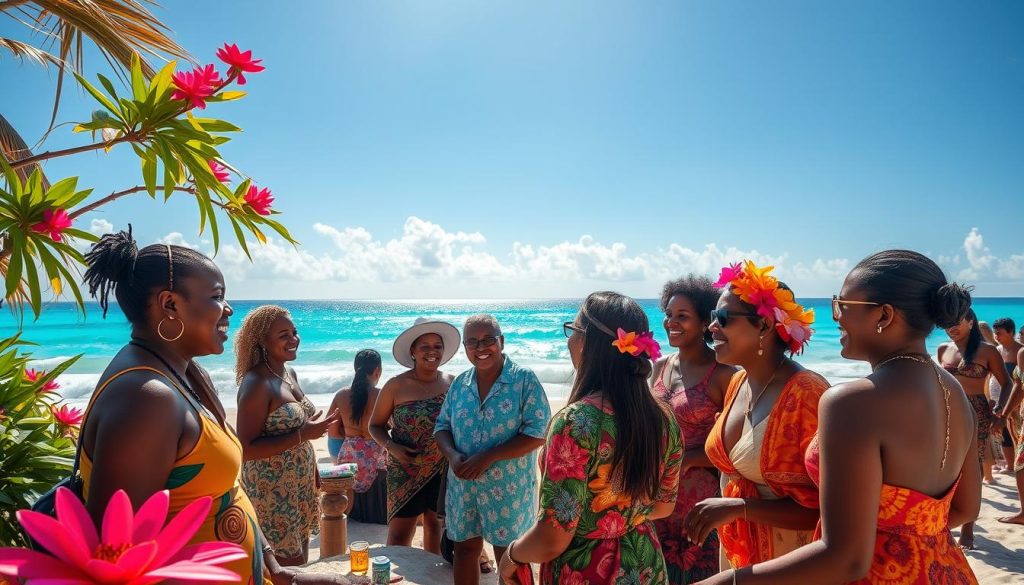
The Bahamas’ language scene is changing fast. This change shows the country’s rich culture and its link to the world. As we all get more connected, the way people speak in the Bahamas is changing a lot.
Digital tools and social media are changing how Bahamians talk. English is still the main language, but new words and ways of speaking are coming in. Young people in the Bahamas are learning to speak in ways that work for the world.
“Language is a living entity, constantly changing and reflecting the cultural pulse of a community.” – Bahamian Linguistic Expert
Today, we see some big changes in language in the Bahamas:
- More people speaking multiple languages
- More learning languages online
- Better skills for talking to people all over the world
- Keeping the local way of speaking alive
Expats are making the language scene more diverse. Knowing basic words is getting more important. This is true for tourism and business with other countries.
| Language | Percentage of Speakers | Key Usage |
|---|---|---|
| English | 95% | Official communication |
| Bahamian Creole | 25% | Local vernacular |
| Haitian Creole | 25% | Community communication |
The future for languages in the Bahamas looks bright. Schools are starting to teach more languages. This helps young people get ready for the world. Even though German is not common, the Bahamas is getting more diverse in language.
As the Bahamas stays a top spot for tourists, speaking well will keep being key. It’s important for both the economy and culture.
Conclusion
Your journey through the Bahamas’ language shows a rich mix of communication. The islands blend English and Creole, showing a complex history of cultural interactions. About 250,000 people speak Bahamian Creole here, making it a unique part of their lives.
The Bahamas is a great example of how language adapts. Ninety percent of people use the local dialect in everyday talks. Even though Standard English is taught in schools, the Bahamian Dialect remains strong. Around 30% of people switch between dialect and Standard English, showing the community’s linguistic flexibility.
Portuguese and other cultures have also influenced the language here. This adds more depth to the already complex language scene. Local media uses Bahamian Dialect in about 40% of their shows, showing a commitment to preserving it.
Your exploration highlights the Bahamas’ ability to keep traditions alive while welcoming new changes. From the Creole spoken in casual settings to Standard English in work, the languages here tell a story of resilience, diversity, and identity.
The above is subject to change.
Check back often to TRAVEL.COM for the latest travel tips and deals.
Here are some Tours & Sightseeing suggestions that might pique your interests!
